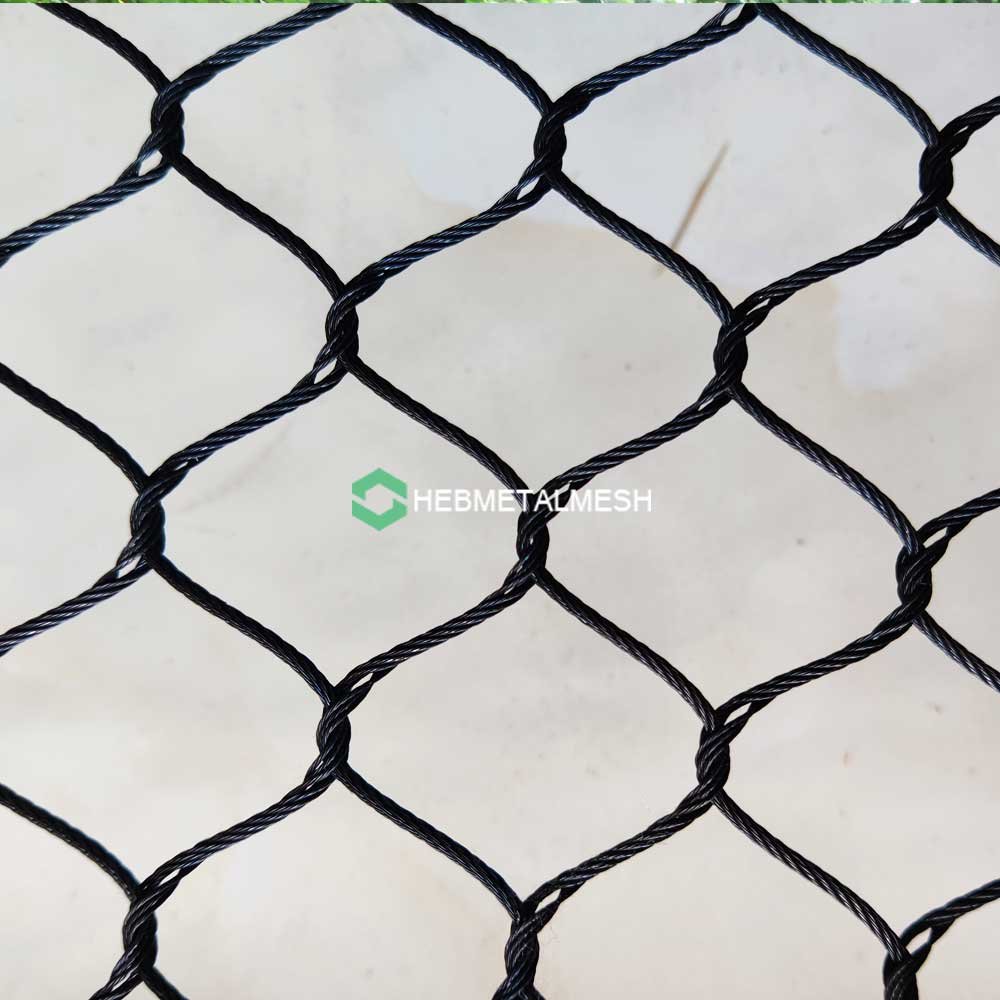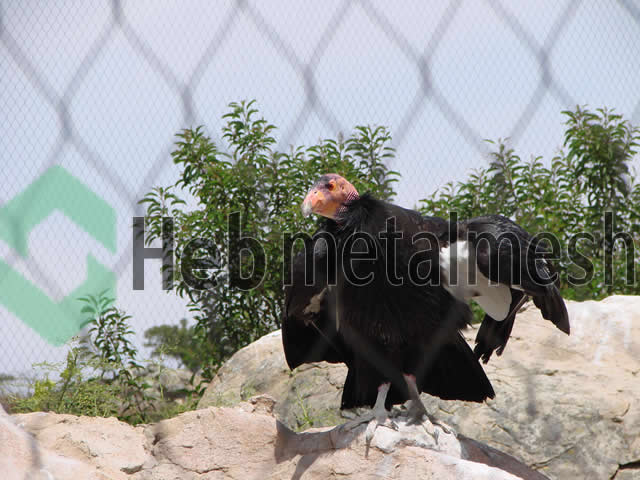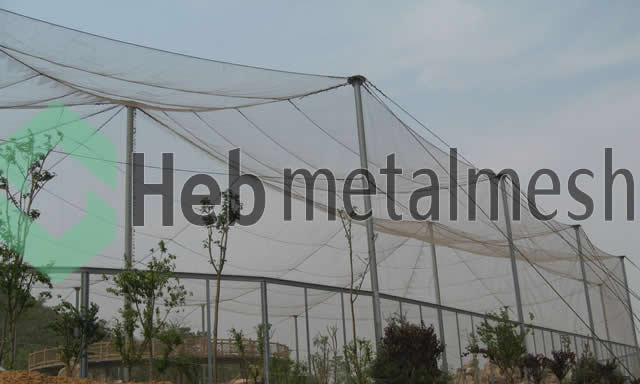Introduction to Mesh Guardrails
Mesh guardrails represent a progressive shift in the realm of safety infrastructure, providing enhanced protection in various settings, including roadways, industrial sites, and pedestrian areas. They are designed to not only ensure safety but also to integrate seamlessly with their environments, reflecting modern design sensibilities. Unlike traditional guardrails, which often utilize rigid materials that lack flexibility and adaptability, mesh guardrails are engineered from durable stainless steel, offering both strength and resilience while maintaining an aesthetic appeal.
The primary purpose of mesh guardrails is to prevent accidents and enhance safety for both vehicles and pedestrians. Their unique construction allows for better visibility and airflow, significantly reducing blind spots and enhancing awareness in critical areas. This is particularly helpful in situations where traditional barriers might obstruct sight lines, leading to potential hazards. Furthermore, the open design of a mesh guardrail helps to contain vehicles during accidents, minimizing the risk of vehicles breaching the perimeter and harming individuals in the vicinity.
Over time, the evolution from traditional guardrail designs to innovative mesh guardrails can be attributed to a growing recognition of the need for improved safety solutions that are adaptable and effective. As urban landscapes continue to expand, so too does the call for safety measures that can address the complexities of modern environments. The rise of mesh guardrails signals a commitment to prioritizing both protection and aesthetic considerations in safety infrastructure.
The significance of mesh guardrails extends beyond their functional advantages; they symbolize a paradigm shift in how safety measures can blend functionality with contemporary design principles. As we move forward towards 2025, it is evident that these guardrails will play a pivotal role in shaping the future of safety, becoming integral to the infrastructure of cities and communities.
The Future is Here: Handwoven Stainless Steel Mesh

As we look towards the future of construction and safety, handwoven stainless steel mesh guardrails emerge as a groundbreaking option that promises enhanced safety features. Unlike traditional concrete options, these innovative guardrails combine durability with aesthetic appeal, revolutionizing not just how we secure spaces, but also how we think about design in urban environments.
One of the most significant benefits of handwoven stainless steel mesh is its resilience. This material offers exceptional strength and is engineered to withstand extreme weather conditions, including harsh winds, heavy snowfall, and intense rainfall. Unlike concrete, which can crack and degrade over time, stainless steel mesh maintains its integrity, ensuring continuous safety and reducing maintenance costs for property owners.
Moreover, the aesthetic versatility of handwoven stainless steel mesh guardrails is noteworthy. Available in various weaves and finishes, these guardrails can be tailored to fit the architectural style of any environment. Whether in a modern urban setting or a rustic landscape, the seamless integration of these guardrails enhances visual appeal while serving their primary purpose of protection. This adaptability not only makes it a preferred choice for architects and designers but also elevates the overall look of infrastructure.
Furthermore, the lightweight nature of stainless steel mesh ensures ease of installation. Unlike the cumbersome concrete alternatives, which require extensive heavy machinery and labor, these guardrails can be installed with less disruption and more efficiency. This reduction in installation time can lead to significant cost savings and allow for quicker project completion.
In summary, handwoven stainless steel mesh guardrails present a forward-thinking solution that marries functionality with design, promising to reshape safety standards in construction and urban planning for years to come.
Why Choose Mesh Guardrails Over Concrete?
In the ongoing evolution of safety infrastructure, the decision to opt for mesh guardrails over conventional concrete barriers presents a compelling case for modern projects. One of the primary advantages of mesh guardrails is their remarkable longevity. Made from stainless steel, these guardrails exhibit excellent resistance to corrosion and impact, allowing them to endure extreme weather conditions and heavy usage without significant deterioration. This durability ensures long-term investment value and reduces the need for frequent replacements.
Another considerable benefit is the ease of installation associated with mesh guardrails. Unlike concrete, which can be cumbersome and requires specialized equipment for both installation and removal, mesh guardrails can often be installed with minimal labor and tools. The lightweight nature of the materials, combined with prefabricated components, facilitates a quicker setup process. This efficiency not only saves time during construction but also minimizes disruption to traffic flow and nearby activities.
Maintenance is another crucial factor that elevates mesh guardrails above traditional concrete options. While concrete barriers often develop cracks or require regular upkeep to ensure safety and compliance, mesh guardrails demand significantly less maintenance. Routine checks and occasional cleaning are generally all that is needed to keep them performing effectively, thereby reducing long-term operational costs.
Finally, safety features inherent in mesh guardrails further enhance their appeal. The design of mesh systems allows for improved visibility for both drivers and pedestrians, reducing accident risks. Additionally, their flexible structure can absorb impact forces, potentially minimizing injury in the event of a collision. This adaptability marks a significant advancement compared to the rigid nature of concrete barriers.
Given these advantages in longevity, ease of installation, maintenance, and safety, it is clear that mesh guardrails are a superior choice for future infrastructure projects, offering both practicality and enhanced protection.
Safety Enhancements Through Design Innovation
The advent of handwoven stainless steel mesh guardrails represents a significant advancement in the field of safety design. This innovative approach to guardrail construction leverages the unique properties of stainless steel and intricate weaving patterns, creating a barrier that is both effective and aesthetically pleasing. The mesh structure is engineered to enhance visibility, allowing drivers to better perceive road barriers, especially in low-light conditions or adverse weather. The reflective qualities of stainless steel further amplify this effect, ensuring that these guardrails stand out to oncoming traffic.
In addition to improving visibility, the design of the mesh guardrail plays a crucial role in vehicle impact absorption. The woven configuration distributes the force of a collision over a wider area compared to traditional solid guardrails. This characteristic significantly mitigates the risk of severe damage to vehicles and reduces the likelihood of injury for occupants during an accident. The flexibility of the mesh allows it to deform upon impact, which not only absorbs energy but also aids in redirecting the vehicle in a safer trajectory.
Another advantage of the mesh guardrail design is its ability to adapt to different environments. Whether installed on urban roads, rural highways, or bridges, the handwoven nature allows for customization based on the specific safety needs of the location. This adaptability ensures that, regardless of the driving conditions, the guardrails maintain their protective qualities. Moreover, the stainless steel material provides durability and resistance to corrosion, promising a long lifespan and consistent performance in various weather patterns.
Overall, the innovative design of handwoven stainless steel mesh guardrails exemplifies how thoughtful engineering can enhance road safety. By focusing on visibility, impact absorption, and adaptability, these guardrails are poised to contribute to safer driving experiences, paving the way for a more secure future on the roads as we approach 2025.
Environmental Impact and Sustainability
In recent years, the construction industry has witnessed a significant shift towards eco-friendly solutions, particularly in the realm of safety barriers. Handwoven stainless steel mesh guardrails are a prime example of this paradigm shift, combining durability with eco-consciousness. The materials utilized in these guardrails are crucial to their sustainability profile. Stainless steel is not only resistant to corrosion and wear but is also fully recyclable. This inherent recyclability ensures that once a guardrail reaches the end of its lifecycle, the materials can be repurposed, reducing waste and minimizing the demand for virgin materials.
When compared to traditional concrete barriers, handwoven stainless steel mesh guardrails offer several environmental advantages. Production of concrete is resource-intensive, requiring vast quantities of water and energy, while simultaneously contributing to significant carbon emissions. Conversely, the manufacturing process for stainless steel has become more energy-efficient, particularly with the adoption of renewable energy sources. These mesh guardrails’ lighter weight facilitates transportation and installation, leading to a reduced carbon footprint throughout their lifecycle.
Moreover, the design of mesh guardrails aids in promoting biodiversity in urban settings. Their open structure allows for the passage of light and air, which can benefit local flora and fauna, unlike solid concrete barriers that often create ecological dead zones. This adaptability makes handwoven stainless steel mesh guardrails not only a safer choice for infrastructure but also a more environmentally friendly option. They can provide essential safety without compromising the ecological integrity of their surroundings. By prioritizing sustainability in their design and manufacturing, these innovative guardrails contribute to the vision of greener infrastructure and promote a safer, more environmentally conscious built environment.
Cost Efficiency: A Long-Term Investment
The implementation of mesh guardrails represents a significant evolution in safety standards, fundamentally altering the financial landscape associated with protective barriers. The initial investment in installing handwoven stainless steel mesh guardrails is paramount; however, it is essential to evaluate this cost against long-term maintenance and replacement expenses. Unlike traditional guardrails, which require frequent repairs and eventual replacements due to material fatigue, mesh guardrails offer superior durability and resilience.
The robust nature of stainless steel, utilized in these mesh systems, is designed to withstand varying environmental conditions without succumbing to rust or corrosion. As a result, the need for extensive repairs and the frequency of maintenance significantly diminish, causing overall costs to decline over time. For example, traditional guardrails may necessitate routine inspections and sporadic refinishing, which can quickly accumulate into a substantial financial burden. In contrast, the lifespan of a mesh guardrail can often surpass that of conventional materials by several years, leading to notable savings.
Furthermore, when evaluating cost efficiency, it is crucial to consider the impacts of reduced liability due to the enhanced safety features of mesh guardrails. Improved safety measures can potentially lead to fewer accidents and associated costs, such as insurance and legal fees, creating a more stable financial outlook for property owners. Ultimately, while the upfront costs related to purchasing and installing mesh guardrails may appear higher initially, the long-term savings realized through diminished maintenance needs and enhanced safety delineate this investment as a financially prudent option.
In conclusion, integrating mesh guardrails into safety systems exemplifies a strategic choice that not only reinforces protective measures but also enhances economic sustainability over the years. The long-term investment will yield financial benefits, ensuring that safety and cost-effectiveness coexist harmoniously.
Real-World Applications and Case Studies
Handwoven stainless steel mesh guardrails have emerged as a critical safety solution in various sectors worldwide. Their versatile design and exceptional durability make them suitable for both architectural and industrial applications. One noteworthy example can be observed in urban environments, where mesh guardrails have been installed on pedestrian bridges and high-traffic areas. These installations not only enhance safety by preventing falls but also contribute to the aesthetic appeal of public spaces, demonstrating that functionality and design can coexist harmoniously.
In the realm of transport, several highway projects across Europe have successfully integrated handwoven stainless steel mesh guardrails. These guardrails provide an efficient barrier against errant vehicles while maintaining a high level of visibility. Due to their mesh composition, they mitigate wind resistance and decrease the potential for debris accumulation—factors that contribute to long-term maintenance and safety. Case studies from Germany and the Netherlands report a significant reduction in accidents attributed to these guardrails, highlighting their effectiveness in real-world conditions.
Moreover, in the construction industry, handwoven stainless steel mesh guardrails have been employed on scaffolding systems to safeguard workers at elevated heights. These guardrails combine strength with lightweight properties, ensuring easy handling and installation while meeting rigorous safety standards. Various construction firms have reported improved safety outcomes and enhanced compliance with occupational health regulations since implementing these guardrails.
Furthermore, in marine environments, developers have recognized the potential of mesh guardrails in coastal and waterfront settings. Their resistance to corrosion makes them an ideal choice for ensuring safety along piers and docks, where traditional materials may fail over time. Case studies from Australia showcase successful applications of these guardrails in safeguarding both workers and recreational users, providing yet another layer of versatility to their use.
Frequently Asked Questions About Mesh Guardrails
These structures offer enhanced visibility compared to traditional guardrails, allowing for better human and vehicle interaction. Their design minimizes blind spots and increases the overall aesthetic appeal of the surrounding environment. Moreover, due to their durable materials, such as stainless steel, these guardrails are resistant to harsh weather and corrosion, ensuring long-term effectiveness.
Stainless steel mesh guardrails exhibit excellent durability; they can withstand environmental wear and mechanical stresses, leading to a lifespan that often exceeds 25 years. This longevity is a key attribute for municipalities and agencies looking to invest in road safety solutions that require minimal maintenance over time. Additionally, the mesh design helps in reducing the incidence of damage commonly associated with traditional barriers, further prolonging their useful life.
Mesh guardrails are adaptable and can be employed in various environments, from highways to urban streets, depending on specific safety requirements and regulatory approvals. These guardrails can be particularly advantageous in areas with high pedestrian traffic or where enhanced visibility is essential. However, consultation with traffic safety engineers is advisable to determine the appropriateness of mesh guardrails based on regional guidelines and traffic conditions.
The Future of Guardrail Technology: What Lies Ahead?
The landscape of highway and urban safety is undergoing a transformative shift, propelled by the necessity for enhanced protection and the integration of advanced materials and designs. As we approach 2025, it is evident that the evolution of guardrail technology will continue, focusing predominantly on improved safety measures, sustainability, and aesthetic appeal. One of the most promising innovations on the horizon is the use of handwoven stainless steel mesh guardrails, which offer unprecedented structural integrity and flexibility in urban settings.
Future advancements are expected to embrace intelligent materials that can adapt to their environment, enhancing the protective capabilities of guardrails. For instance, the integration of smart technologies could facilitate real-time monitoring of guardrail performance and surrounding traffic conditions. With the help of sensors embedded within the mesh guardrail structures, data on impact forces and weather conditions could be evaluated, leading to proactive maintenance and timely interventions. Such innovations would not only bolster the guardrails’ effectiveness but also contribute significantly to public safety initiatives.
Moreover, as urban spaces become more congested, the designs of guardrails will need to align with the architectural aesthetics of their surroundings. Handwoven stainless steel mesh guardrails inherently provide a sleek and modern appearance that can blend seamlessly into various urban landscapes. This capability presents the opportunity for municipalities to enhance their visual appeal while employing effective safety measures. The lightweight yet robust nature of these mesh guardrails allows for diverse applications, making them a versatile option for various environments.
Looking ahead, the combination of advanced materials, smart technology, and thoughtful design lays the groundwork for the future of guardrail systems. The ongoing development and implementation of mesh guardrails signifies a commitment to not only improving safety but also adapting to the evolving needs of urban society. Through these innovations, guardrails will rise to meet the challenges of tomorrow, ensuring safer journeys for all.


